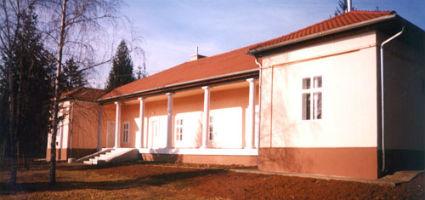2024. April 23. Tuesday
Culture House and Library - Village Gallery - Nagyréde
 |
Address: 3214, Nagyréde Községi Könyvtában, Kossuth u. 1.
Phone number: (37) 373-027, (37) 373-588
E-mail: k7590@koznet.hu
Opening hours: Mon, Wed 13-19
Tue 8-12, 13-18 Thu 13-18 Fri 8-12, 13-18 Sat-Sun: on prior notice for groups |
The Village Galery was opened in the Fáy mansion house on 14th February 1997.
The mansion house was built in the 18th century. It was built in the classicist style with a baroque core. Since 1977 the mansion house has been functioning as the local library. Due to the local council, the building was renovated in the year 2000.
The opening hours of the galery and the library are the same.
The permanent exhibition of the Galery represents the life work of painter József Molnár, who was born in the village. The artists who lives and works in Budapesten donated his works to the citizens of the village, by thus expressing a great reverence toward the its homeland.
The art works of the painter were inspired by his fatherland. The painter recalls various times of the past and present, and by doing this he keeps these scenes for future generations.
One or two temporal exhibitions are arranged annually.
The mansion house was built in the 18th century. It was built in the classicist style with a baroque core. Since 1977 the mansion house has been functioning as the local library. Due to the local council, the building was renovated in the year 2000.
The opening hours of the galery and the library are the same.
The permanent exhibition of the Galery represents the life work of painter József Molnár, who was born in the village. The artists who lives and works in Budapesten donated his works to the citizens of the village, by thus expressing a great reverence toward the its homeland.
The art works of the painter were inspired by his fatherland. The painter recalls various times of the past and present, and by doing this he keeps these scenes for future generations.
One or two temporal exhibitions are arranged annually.
